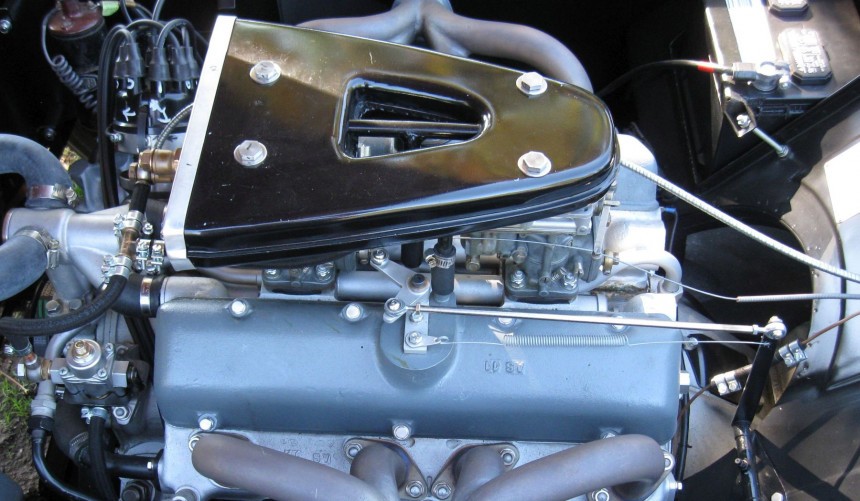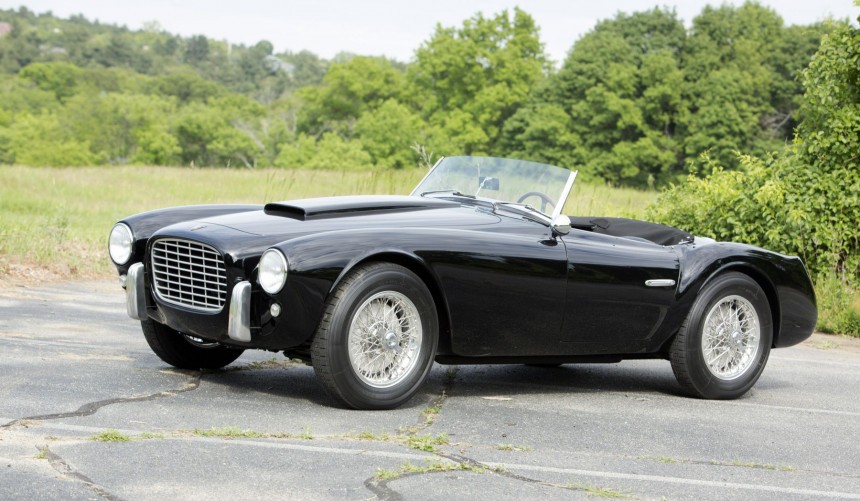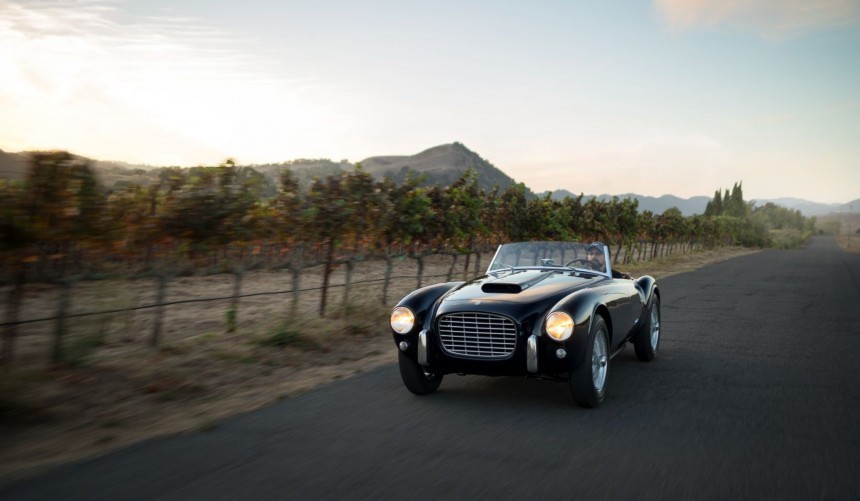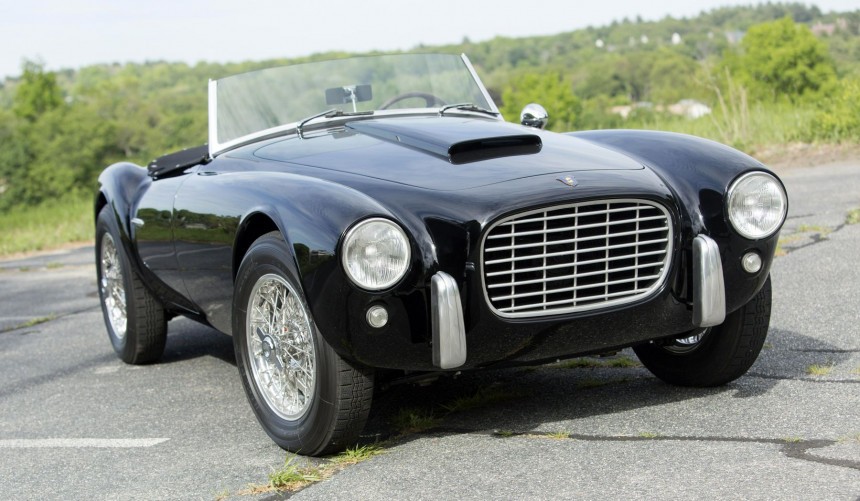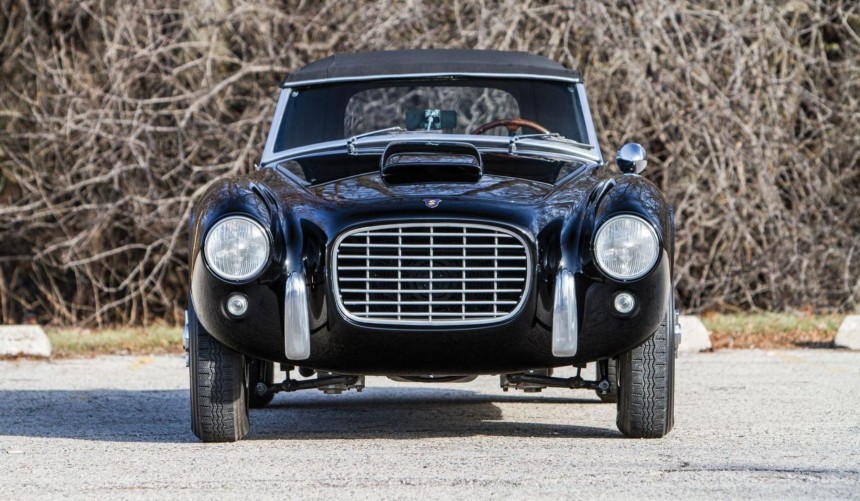Nicknamed “Little Ferrari” by the one-and-only Steve McQueen, the 208S was a gorgeous two-seat roadster developed by a Fiat tuning house turned low-volume carmaker.
By the early 1950s, the sports car segment flourished, mainly thanks to the revival of automotive racing worldwide and new competitions such as Formula 1.
In many ways, Italy was the epicenter of sports cars during that era, with manufacturers like Ferrari, Maserati, Alfa Romeo, and Lancia leading the charge.
Apart from those legendary brands, a smaller company dubbed Siata (Società Italiana Auto Trasformazioni Accessori) joined the illustrious sports car manufacturing club by producing a small series of intriguing models.
A brief history of Siata
Established in 1926 by amateur race car driver Giorgio Ambrosini, the small Turin-based firm started by producing performance parts for neighbors Fiat’s production models.
Siata survived the dreadful years of WWII, and after the global conflict concluded, it diversified its portfolio by kicking off low-volume production of its own sports cars.
Though its models were heavily reliant on hardware borrowed from Fiat production models, Siata managed to establish itself in the sports car market thanks to its bespoke advanced engineering and near-flawless build quality.
The first Siata that managed to attract sports car buyers was the 1950 Daina, a nimble two-seater that laid the foundation for an improved model called 208S.
Powered by Fiat’s first production V8
While the Daina, used a Fiat four-cylinder tuned by Siata for adequate performance, the 208S took performance to another level thanks to a much more impressive engine.
In 1952, Fiat stepped into the sports car arena with its all-new 8V (Otto Vu, or V8 in English), which, as the name implied, was powered by an eight cylinder engine with a V-shaped block.
While it only displaced 2.0 liters, the brand-new V8, codenamed Typo 104, was an advanced, all-aluminum unit with overhead valves and a pair of twin-choke Webber carbs that initially made 104 hp, while providing reduced weight and compact packaging.
Siata’s engineers saw the lightweight and somewhat inexpensive powerhouse as the perfect heart for the Daina’s successor, and after securing a few units from Fiat, they started developing the new car.
A coachbuilding and engineering masterclass
The project started with a two-door coupe dubbed 208 CS, which took to the stage at the 1952 Turin Auto Show. Over the next two years, only 18 coupes were built, of which eleven received bodies coachbuilt by Balbo while the other seven were bodied by Stabilimenti Farina (founded by Giovanni Carlo Farina, the brother of Batista “Pinin” Farina).
The 208 project culminated with the 208S that went into production in 1953. Like the coupe, this roadster version was built around a bespoke tube frame chassis that kept overall weight down to just 2,460 pounds (1,116 kg).
Apart from the 8V engine, the car utilized a large number of components borrowed from Fiat production models, mainly the 8V.
The suspension, which was largely shared with Fiat’s sports car, was fully independent, receiving a custom geometry setup that improved maneuverability over the larger 8V, while stopping power was provided by four large-diameter drums.
Everything was covered by a bespoke body shared little with the coupe version. Designed by Giovanni Michelotti, the all-aluminum structure was handbuilt by Carrozzeria Motto. While the main focus was saving as much weight as possible, the curvacious, free-flowing body was also a styling masterclass that drew comparisons to the era’s most stylish Ferraris.
Praised for its impeccable handling
From 1953 to 1955, Siata produced 33 examples of the 208S. Of those, most received Carrozzeria Motto bodies, but around three prototypes were built with custom bodies made by Bertone and Farina.
The series production Motto-bodied cars were powered by a Siata-tuned 8V engine that received revised cylinder heads, performance-oriented cams, and a custom exhaust system. With those upgrades, the engine was rated at 125 hp, but according to owners, the figure was underrated, as the beefed-up Otto Vu was actually capable of delivering up to 150 hp.
Regardless of the exact output figure, the Siata 208S was capable of acceleration to 60 mph (97 kph) from a standstill in 12.4 seconds, reaching a top speed of 124 mph (200 kph), according to a test conducted by Road & Track magazine.
Those figures weren’t particularly impressive, even for the early 1950s, but the 208S stood out thanks to its near-flawless handling. Thanks to the fully independent suspension system and perfect, 50/50 weight distribution, the roadster shined on a winding road, gaining universal praise for its maneuverability.
Made famous by the King of Cool, who allegedly turned it into a Ferrari
While most 208S examples were sold to European customers, a few made their way across the Atlantic through prominent hot rodder and West Coast Siata importer Ernie McAfee.
One of the US-bound 208S examples was brought by none other than Hollywood superstar Steve McQueen, who, like all other owners, was fascinated by its styling, build quality, and handling.
Legend has it that the King of Cool nicknamed his Siata “Little Ferrari” and even placed Ferrari badges on the car.
The Shelby Cobra-powered 208S
For some, the Siata 208S looks a lot like a Shelby Cobra, but while it’s tempting to call it Cobra-inspired, this simply wasn’t the case. The 208S was unveiled in 1953, while the AC Cobra, the British sports car on which the legendary Shelby roadster is based, debuted nine years later.
Nevertheless, there is one exciting connection between the two roadsters.
In 1962, cinematographer Kent Wakeford purchased one of the 208S examples that made it to the US. A few months later, he purchased a 260-ci (4.3-liter) Shelby-tuned Ford V8 from friend Carroll Shelby, who had just upgraded one of his early competition Cobras with a larger 289 Ford unit.
With the help of custom car guru and aerospace engineer Alan Johnston, Wakeford’s Siata received a drivetrain transplant, becoming the most powerful Motto-bodied 208S of them all.
The one-off(pictured above) has survived, and after receiving a full restoration, it landed under the hammer at a 2014 RM Shoteby’s auction. The highest bid reached a whopping $1,000,000, but the owner’s reserve wasn’t met.
Powered by a Shelby-tuned engine or not, the 208S was a terrific 1950s sports car that some have called “the perfect driver’s car.” However, because it wasn’t produced by a famous carmaker, it has been all but forgotten today.
For a virtual tour of a surviving example of this rare and grossly underrated gem, we recommend watching the YouTube video below by MyClassicCarTV.

